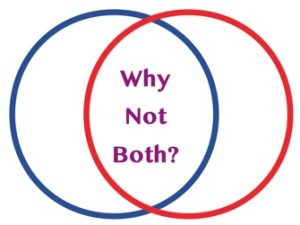
T. Westwood
This week’s readings asked us to examine two models for integrating technology into our classrooms: the TPACK Framework and the SAMR Model. The TPACK Framework refers to the interrelation between Technology, Pedagogy, and Content Knowledge, while The SAMR Model seeks to classify and evaluate learning activities based on a hierarchy.
I find the notion of putting a model in front of a teacher and saying, “Here, use this.” is a funny one. I have yet to find a teacher that will take any sort of model and use it exclusively all the time. There’s simply too much good stuff out there. So what’s good with these two models?
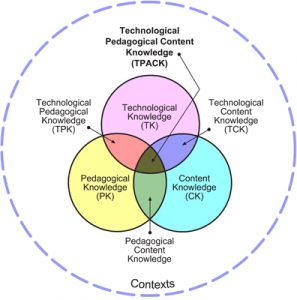
Fig”File:Tpack.jpg” by Llennon~commonswiki is licensed under CC BY 3.0.
The TPACK Framework makes sense. Most of us teachers understand how Content Knowledge and Pedagogical Knowledge are pretty much Teaching 101. The addition of Technological Knowledge is a new sphere to overlay that many teachers have yet to fully understand. Some teachers actively fear and avoid it. It takes a lot of time and effort to learn this new piece for themselves, building their own Technological Content Knowledge and Technological Pedagogical Knowledge. I agree that, “…TPK requires a forward-looking, creative, and open-minded seeking of technology use, not for its own sake but for the sake of advancing student learning and understanding.” (Koehler & Mishra, 2009 p. 66). With some teachers resistant to this big change, technology needs at least one champion in every school. In many schools, there is no greater champion than the teacher-librarian. In our elementary school, many of our teachers are using collaborations with the teacher librarian to introduce technology into the classroom.
For me, the greatest obstacle is time. I need time to explore more ideas and apps to integrate into my teaching but I am well ahead of many of my colleagues because I do not fear digital technology. I feel like the SAMR Model offers me the next step to consider.
The SAMR Model classifies technology use for learning activities into a hierarchy with Substitution and Augmentation at the bottom, capable of enhancing learning, while Modification and Redefinition are at the top of the hierarchy, transforming learning.
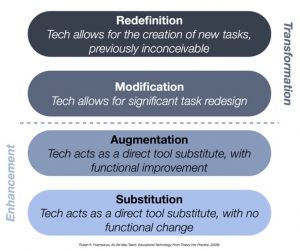
Puentedura’s (2006) Substitution, Augmentation, Modification, and Redefinition (SAMR) model (retrieved from http://www.happasus.com/rrpweblog/)
Puentedura’s model poses that the goal for teachers should be to create learning activities that can be classified higher up the hierarchy. The higher one can classify their teaching, the better. When I first read the article by Romrell et al (2014), I was a little alarmed at the notion that we should all be striving to create “previously inconceivable” tasks because I thought they were ignoring the value and/or necessity of the lower rungs. The more I think about it, I agree with Hamilton (2016). Teachers should plan learning activities that integrate meaningful technology-based learning experiences, rather than focusing on redefining learning and teaching (Hamilton, 2016, p. 438). This harkens back to the Clark-Kozma debate. I should be able to consider what I want my students to learn and then choose the rung on the ladder that best accomplishes that outcome. Maybe I need to design lessons that allow different children to use different rungs.
For a kindergarten teacher, there are many basics to cover to make integrating any sort of technology possible. We need to spend a lot of time at the substitution and augmentation levels. They need to learn what a circle is, then how to make a circle with a finger in the air, then make a circle with a finger in sand, then make a circle with a correctly held pencil, and eventually we can learn how to turn on an iPad before we draw a circle with a finger again, but this time, in an app. Should I skip the pencil and go straight to the iPad after the sand? Would that be a meaningful technology-based learning experience? Is there a functional improvement? If not, is it okay to do it anyway because it’s fun? It is Kindergarten after all. What is the role of technology in play-based learning? Is this the context that Hamilton argues the SAMR ignores?
In the end, I can find value in both models. I like that TPACK asks us to consider technological knowledge and context. I can design using TPACK and continue to consider non-digital technology alongside digital technology as I seek to create meaningful learning activities. I like how SAMR pushes us to find innovative learning tasks. Can I get to Redefinition in Kindergarten? I think I can and I’m glad to have learned about it so I can use it to push my thinking beyond substitution and augmentation. Does the model mention context? No, but I think teachers are smart enough to know they must customize the model for their own learners.


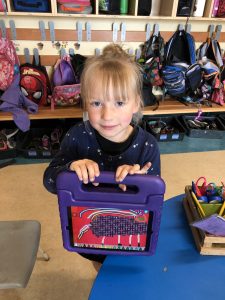


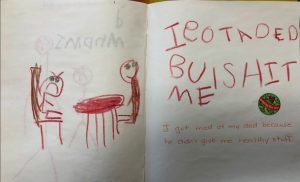
Recent Comments